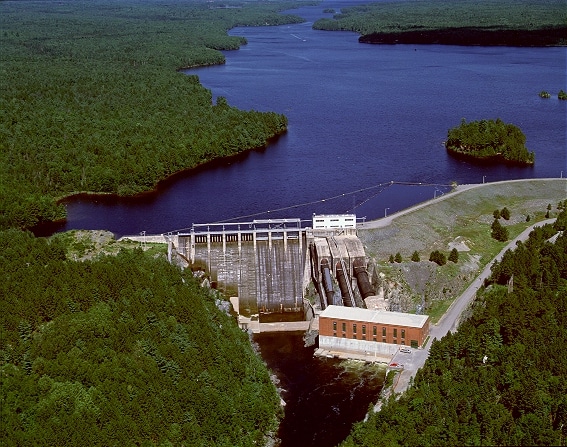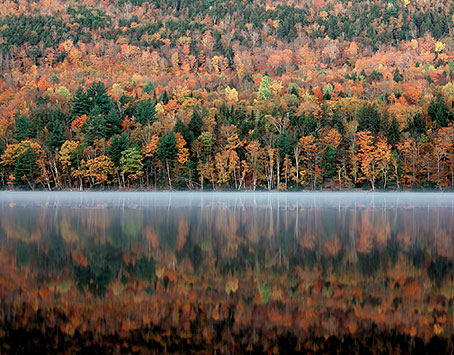Harris Station Dam: The Key To Kennebec River Rafting
Harris Station dam provides consistent whitewater all summer long for Maine adventure vacationers rafting the Kennebec River. Daily summertime water releases actually get longer from Harris Station, thanks to the higher power needs of peak summer. This means guaranteed whitewater rafting excitement and vacation value for the thousands of guests annually who make Kennebec rafting part of their New England vacations.
Built in 1952-1954, Harris Station is the largest hydroelectric dam in the state of Maine. Harris Station is in the upper section of the Kennebec River basin, high in the watershed near Maine’s Moosehead Lake. Immediately above it is Indian Pond, which drains Moosehead Lake via East Outlet and West Outlet.

Indian Pond and Kennebec Gorge area is well known for its fishing and whitewater opportunities. Harris is an integral part of Maine’s hydroelectric generation. As environmental pressures with respect to fossil fuel power escalate, hydropower generation from stations like Harris will likely become even more important as a clean energy resource. Harris Station is unique for its “black-start” capability. The station can begin generating power and come on-line without the input of electricity. Black-start generating locations help start up other generators in the event of a large outage. Electricity from Harris is fed into the New England grid and moves throughout the state and the surrounding areas.

Northern Outdoors really did have to dodge logs on the Kennebec for those first 6 weeks of rafting in the spring of 1976. The last log drive in the continental United States occurred on the Kennebec in 1976, beginning in Moosehead Lake and continuing to Winslow. (Read about those early days in our next blog from Northern Outdoors co-founder Suzie Hockmeyer.)
In the 1950s, over 84,500 cords of wood per year floated through the large log sluice built on the western end of the dam that allowed logs to continue floating to the logging mills downstream. Only softwood was driven downstream because it floats more effectively than hardwoods. The log drive was stopped in 1976 based on environmental considerations with water quality issues from pulp clogging the lakes and rivers as the logs made their way downstream to the logging mills.


3 Responses
Well, I was one of those first rafters that Alan Haley & Wayne took down the Kennebac River. We would carry the huge raft "SILVER BULLET" as it was called down to the East outlet in Rockwood, run that short patch of White Water then turn on the outboard motor for the trip across Indian Pond. Have lunch at Harris Station then portage the raft out of the pond down to the the output side of the station. Then back on the river and down to the bridge at West Forks. Load the raft onto a trailer and everyone pack into the back of the pickup truck with a handmade wood top and the long drive back to Rockwood. After the stop at Cliff Berry’s store for a hot cup of coffee and a couple of red hot dogs. AHHHHHH the good old days. Hope all is weel you you suzie and all the other great people at Northern Outdoors.
Dan Long
Boston, MA.
went upstream by canoe on the Kennerback from Norrigewalk to thge forks in 1938 The river was fulll of 4ft logs.It took a whole day to go upstream from Carastunk to the Forks and half an hour to get to back down to Wyman Dam ..
Wow, love that history! Thanks for your comment, William! Such a rich history in these parts.